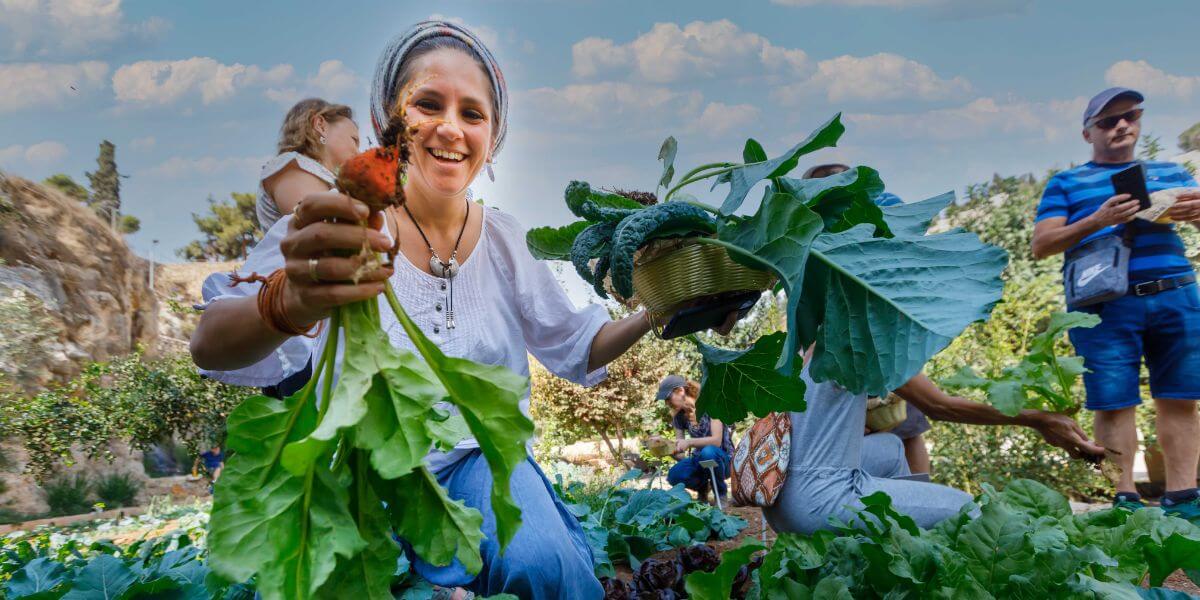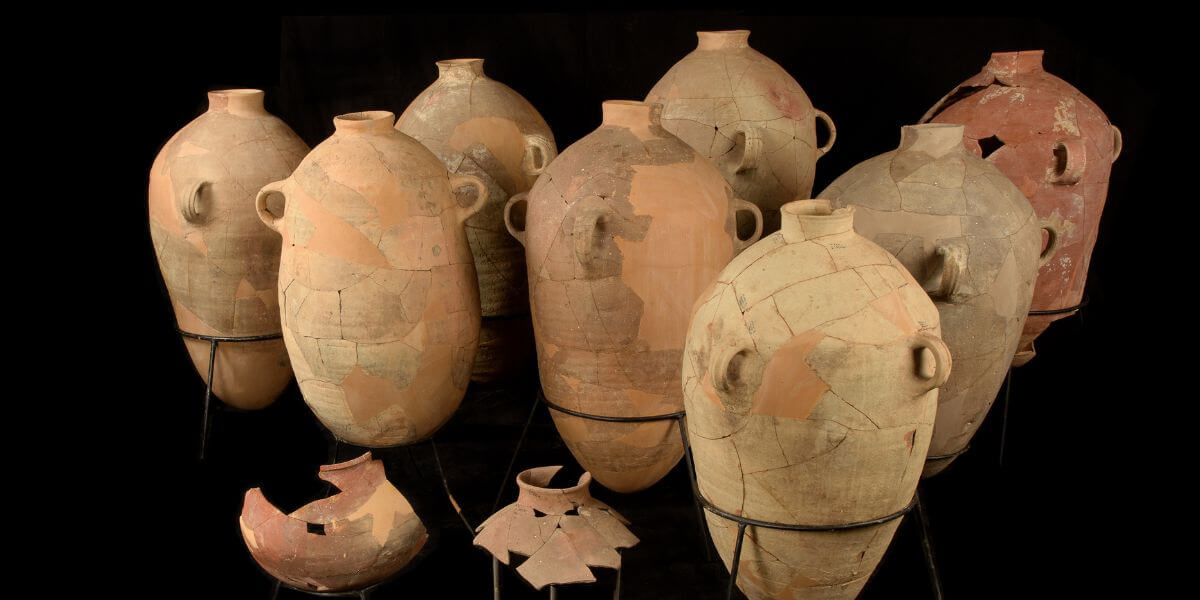A year has passed, a year has come, and an atmosphere of renewal is once again felt in every corner. In order for us to be bestowed with a good and sweet new year, many are used to sitting around the table on the festival, eating fruits and other foods that represent a blessing for the whole year. In the City of David, the symbols and signs of Rosh Hashanah take on an additional meaning, and you can meet them in different forms throughout the year.
Honey
What symbolizes the longing for a good and sweet year more than dipping bread or apple in honey? The sweet liquid is perhaps the most distinct symbol that was and is used on the eve of the festival in all Jewish communities. At the agricultural farm in the Valley of Hinnom, bees are raised in special hives, and you can come and watch the intriguing process of making natural honey.
Date (Tamar)
Some claim that the original honey mentioned in the Bible is the date honey known to us as Silan, but the date also stands as a symbol in itself, and many used to decorate their table with it. The sweet fruit that the Land of Israel was praised for comes from the palm tree, and can be seen embossed on a coin from the days of the Bar Kochba revolt that was discovered during excavations at the Davidson Archaeological Park.
Pomegranate
Another fruit that the country is praised for is the pomegranate, which was known in the olden days as a symbol of abundance and fertility and well as prized as having medicinal properties. The pomegranate appears on the half shekel coins from the time of the Great Revolt against the Romans, and a number of coins of this type were discovered in the archaeological experience in Emek Tzurim.
Leek and Beetroot
Two of the vegetables that are usually eaten on New Year’s Eve are kharti (leek) and silka (beetroot). Both vegetables can be found among the variety of crops on the Farm in the Valley, and you can even take them home by picking some yourself. Our recommendation: you should try making leek fritters and chard (beetroot) fritters. From experience, guests will be crazy about you.
Grapes and Figs
We were also a little surprised, but it turns out that there are communities where it is customary to eat grapes and white figs as a symbol of sweetness and the “whitening” (cleansing) of sins. Among other things, grape seeds and fig seeds were discovered in the garbage pit from the Abbasid period that was uncovered on the pilgrims’ road. In addition to this, motifs connected with vines were stamped on coins from the Great Revolt that were discovered in the City of David. The palm tree we mentioned is on the other side of the coin, from the time of Bar Kochba.
Wine
The feast on the eve of the holiday is usually opened with a special dedication over fine wine. There are those who have the custom of adding verses of blessing and prayers for good luck and a good and blessed year just prior to this dedication. In the City of David, wine jugs from the end of the First Temple were discovered, bearing the symbol of the economy of the Kingdom of Judah, and inside them, there is a surprising find: remains of vanilla spice – the prestigious spice, which came to Israel from afar.
The wine jugs, dating to the days of King Zedekiah – the end of the kingdom’s heyday – were discovered in storage rooms of buildings in two different archaeological excavations, and in all of them, clear evidence of wine storage was found.
“Tekiot” (“Blasts”)
Not exactly like the Shofar, but still related to blowing: A stone was found in the Davidson Archaeological Garden, with the words “To the House of Tekiah” engraved on it, recalling the name of a tower in the Temple courtyard from which trumpets were blown every Friday to announce the arrival of the Sabbath.
Dove
It used to be a beautiful custom to send colorful greeting cards to each other for Rosh Hashanah and the holiday season. Today, we are satisfied – at best – with a laconic WhatsApp message. Those of us who are over 30 and familiar with the custom surely remember one of the main motifs on the cards: a dove with an olive leaf, which for many symbolizes peace and tranquility – two things that so important that it is appropriate to wish them in the New Year’s greeting.
In the archaeological experience at Emek Tzurim, a tiny oval, purple stone was uncovered that was used as a seal (gama) during the time of the Second Temple about 2000 years ago. There are engravings of two elements on the precious stone: The first shows a bird, apparently a dove, and next to it, there appears to be a long and rounded thick branch with five fruits on it – apparently the ancient persimmon plant that was used to produce medicines, ointments and perfumes and was even part of the incense that was burned in the temple.
It is evident that quite a few of the findings present motifs that can also be found in the symbols of the festival, and this is probably not a coincidence. All that remains is for us to wish you a happy and sweet new year, a year of success and prosperity, a year of peace and tranquility!












